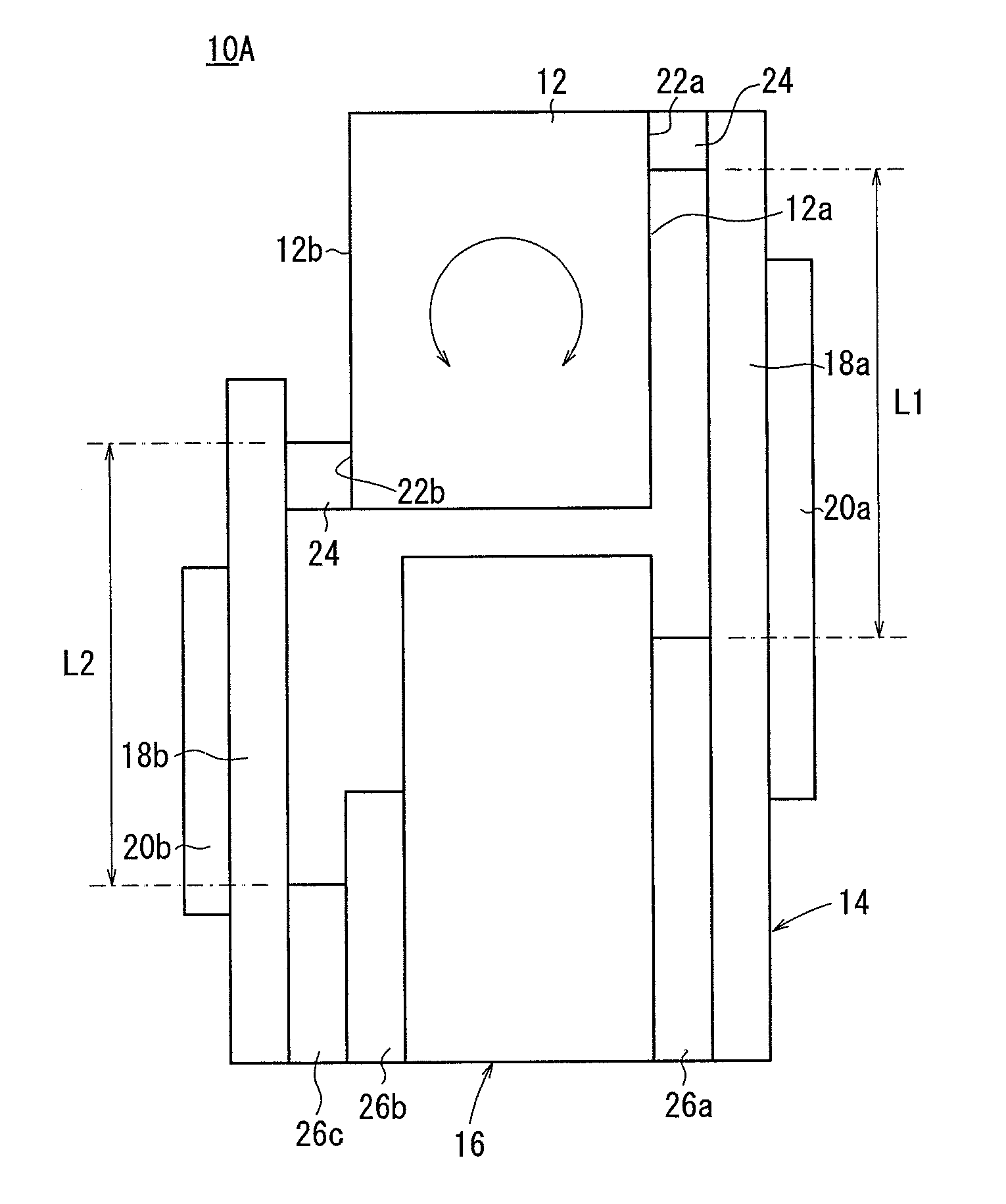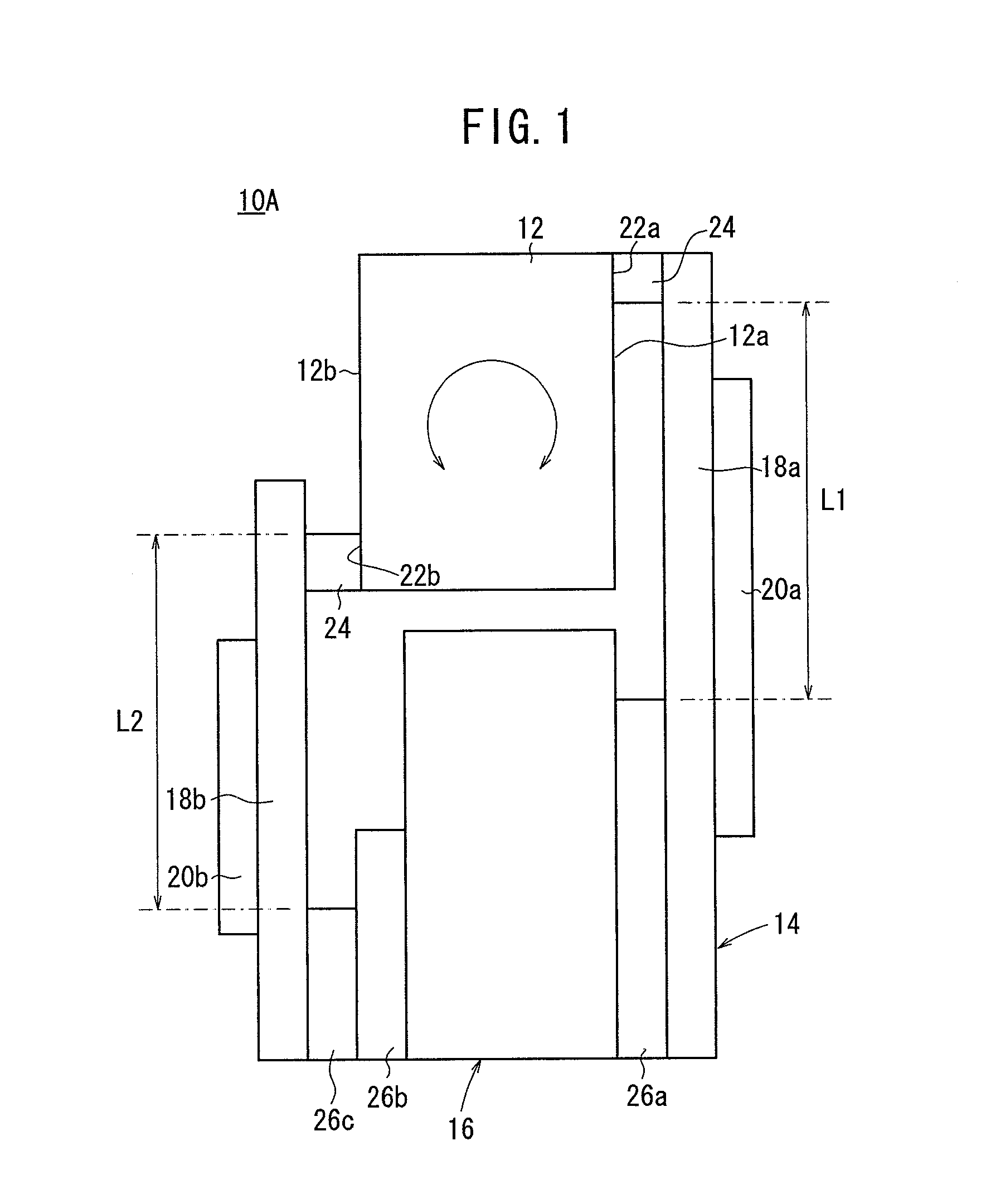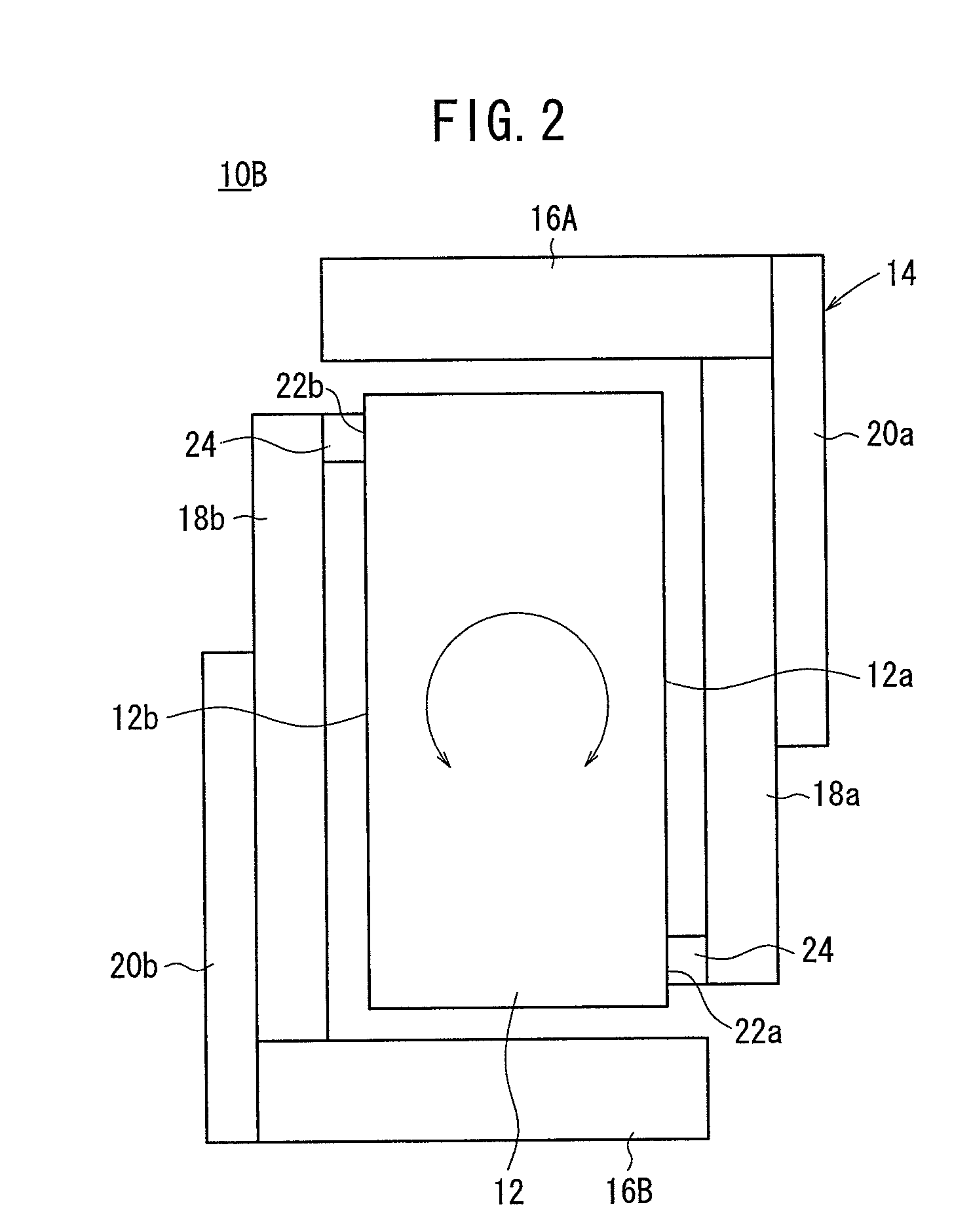Piezoelectric/electrostrictive device
- Summary
- Abstract
- Description
- Claims
- Application Information
AI Technical Summary
Benefits of technology
Problems solved by technology
Method used
Image
Examples
first embodiment
[0111]As shown in FIG. 1, a piezoelectric / electrostrictive device 10A according to the present invention (hereinafter referred to as a first piezoelectric / electrostrictive device 10A) comprises a rotor 12 substantially in the form of a rectangular parallelepiped, the rotor 12 having a pair of opposite surfaces 12a, 12b, and a rotary actuator 14 for angularly displacing the rotor 12. A slider, a sensor, a stage, or the like may be mounted on the rotor 12. Alternatively, the rotor 12 itself may serve as a slider, a stage, or the like.
[0112]The rotary actuator 14 includes a stationary member 16, a first vibratory plate 18a and a second vibratory plate 18b extending in one direction from opposite sides of the stationary member 16, a first piezoelectric / electrostrictive element 20a mounted on and extending from a side surface of the first vibratory plate 18a to the stationary member 16 for actuating the first vibratory plate 18a, and a second piezoelectric / electrostrictive element 20b mo...
second embodiment
[0131]In the second embodiment shown in FIG. 2, the rotary actuator 14 is fixed to the rotor 12 at two locations. FIG. 3 shows a modified piezoelectric / electrostrictive device 10Ba. In FIG. 3, the first vibratory plate 18a has a first protrusion 28a mounted on a surface thereof which faces one surface 12a of the rotor 12 at a longitudinally central position, and the second vibratory plate 18b has a second protrusion 28b mounted on a surface thereof which faces another surface 12b of the rotor 12 at a longitudinally central position. The protrusion 28a is bonded to the one surface 12a of the rotor 12 by an adhesive 24, and the protrusion 28b is bonded to the other surface 12b of the rotor 12 by an adhesive 24.
[0132]The first stationary member 16A has a third protrusion 28c mounted on a surface thereof which faces the rotor 12 at a longitudinally central position thereof, and the second stationary member 16B has a fourth protrusion 28d mounted on a surface thereof which faces the roto...
seventh embodiment
[0216]The rotary actuator 14 is of a structure that is essentially the same as the rotary actuator 14 of the piezoelectric / electrostrictive device 10Gd according to the fourth modification of the seventh embodiment, but differs therefrom in that it comprises an integrally sintered assembly of laminated ceramic green sheets.
[0217]On an eleventh green sheet 88a, which serves as the first vibratory plate 18a and the second vibratory plate 18b, there are laminated and integrally sintered a twelfth green sheet 88b, which serves as the stationary member 16 and portions of the forty-first arm 84a and the forty-second arm 84b, thirteenth through fifteenth green sheets 88c through 88e, which serve as portions of the forty-first arm 84a and the forty-second arm 84b, and a sixteenth green sheet 88f, which serves as the movable member 80 with the rotor 12 mounted thereon. Each of the eleventh through sixteenth green sheets 88a through 88f comprises a single green sheet or a plurality of green s...
PUM
 Login to View More
Login to View More Abstract
Description
Claims
Application Information
 Login to View More
Login to View More - R&D
- Intellectual Property
- Life Sciences
- Materials
- Tech Scout
- Unparalleled Data Quality
- Higher Quality Content
- 60% Fewer Hallucinations
Browse by: Latest US Patents, China's latest patents, Technical Efficacy Thesaurus, Application Domain, Technology Topic, Popular Technical Reports.
© 2025 PatSnap. All rights reserved.Legal|Privacy policy|Modern Slavery Act Transparency Statement|Sitemap|About US| Contact US: help@patsnap.com



